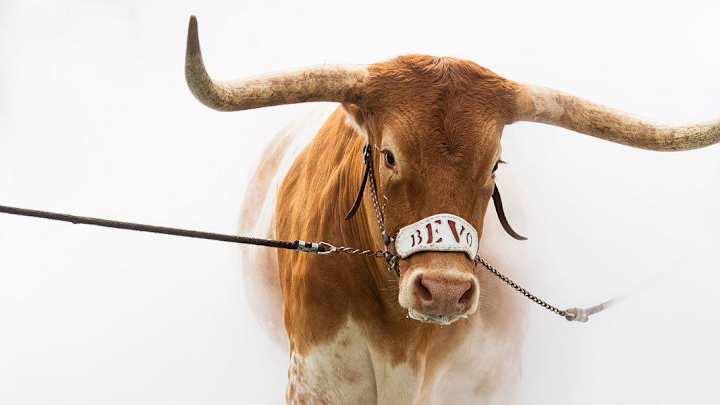Texas Football Traditions Stand as Tall as a Tower

One of the biggest jokes heard around college football after the news broke that Texas was talking to, and would soon join, the Southeastern Conference, had to do with a league crackdown on taunting.
The previous week, Big 12 officials had made a point to let everyone know that they would be cracking down on unsportsmanlike celebrations this season, including the gesture known as a "Horns Down"
For those who don't know, the Hook ’em Horns hand signal is one of the school's biggest traditions, and was created by cheerleader Harley Clark in 1955.
The inverse, Horns Down, is used by opposing fans to mock or make fun of the Longhorns.
“Let me put it this way, if you do horns down to a Texas player, as an opponent, that’s probably going to be a foul,” Big 12 Coordinator of Officials Greg Burks said. “If you turn to your crowd and do a ‘horns down,’ you’re not taunting an individual or an opponent so it probably won’t be a foul.
“Please all of you note, that I said probably. We have to consider intent. And we have to consider situation. And so those judgements I will leave to our individual officials.”
The SEC isn't expected to adopt a similar rule, at least not for a while.
Right now the remaining Big 12 would probably like to make another kind of gesture toward departing Texas and Oklahoma.
Bevo
For a more in-depth story about Bevo check out the introduction to his series, Welcome to the SEC, Texas!
The quicker description is this: In 1916, a maverick longhorn steer was brought to campus on a train from South Texas and introduced to cheering fans at halftime. Thus, the start of the tradition. Bevo is handled by the Silver Spurs student service organization.
The Other Mascots
Texas' costumed mascot is known as Hook ’Em.
We're not sure if actor Matthew McConaughey officially qualifies as a mascot or not.
Burnt Orange and White
The official colors of the Longhorns date back to 1885, when two students on their way to a baseball game stopped at a general store to get ribbons for the crowd. The most plentiful colors in stock were orange and white. Texas officially adopted orange and white as its colors in 1900. At times the school has used a brighter orange, but football coach Darrell Royal revived burnt orange as the preferred shade for good in the early 1960s.
The Eyes of Texas
The school song, “The Eyes of Texas,” was written and performed in 1903 by students, poking fun at a favorite saying of then-President William Prather, and first performed at a a minstrel show. It's become a hot topic as numerous student-athletes have asked for it to be removed, but the establishment and many alumni are resistant to the change, citing tradition. In 2020, President Jay Hartzell announced that UT will own, acknowledge and teach about all aspects of the origins of “The Eyes of Texas” as they continue to sing it moving forward with a redefined vision that unites the community. Those efforts are underway.
"The Eyes of Texas" is sung prior to the start and close of all Texas Athletics events and during all other official university functions. It's actually sung to the tune “I’ve Been Working on the Railroad.”
Big Bertha
Alabama fans already know this one as they saw it during the 2009 national championship game at the Rose Bowl. Out front of the Longhorn Band (“The Showband of the Southwest”) is always the world’s largest bass drum, Big Bertha. It takes a five-person group of band members to handle the 500-pound drum that measures 8 feet in diameter.
Lighting the Tower
The 307-foot tall Tower was completed in 1937 and commands the highest point of campus. Usually lit up in white light, the Tower glows orange on special occasions, and can also include numbers.
For example, it may be all orange for commencement, a conference title or a win against Texas A&M in football. A number "1" on all sides highlighted by orange lights signals that the university won a national championship.
Smokey the Cannon
Smokey the Cannon was built in 1953 by the university's mechanical engineering laboratory, in response to shotgun blasts often heard at the Red River Rivalry. The current version of the cannon, Smokey III, is a famous replica Civil War artillery cannon that weighs over 1,200 pounds. It's operated by the Texas Cowboys student organization, and fires four 10-gauge shotgun shells simultaneously whenever the football team scores or wins the game.
This is the fourth story in a series that will examine the history of the Longhorns football program, and what it will bring to the SEC. Parts of this post originated from the book, Huddle Up: Texas Football.
Welcome to the Southeastern Conference, Texas!
The Coaching Legacy at Texas Begins With One Name: Darrell Royal
Texas Football is Known for Star Players Like Earl Campbell, Ricky Williams
